NLE – Non linear editing – has been around for over 40 years, but it didn’t become common place in Hollywood – that is, being used for feature film and broadcast television – until the early 90’s. And that’s where we’ll start.

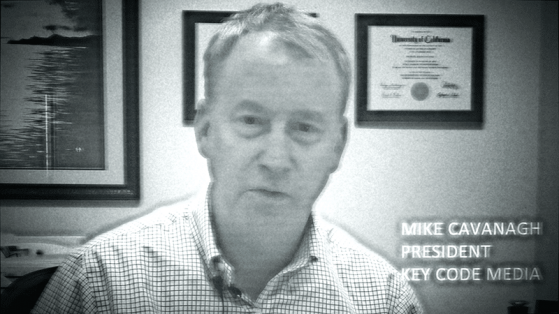 But before I start, I do need to set a disclaimer. I also work for Key Code Media, who sells many of the tech solutions that I talk about on 5 THINGS. And wouldn’t ya know it, we sell a heck of a lot of Avid and things that play with Avid…including Adobe, and Apple, for that matter. I don’t want any of you think I’m a paid shill, so I got clearance
But before I start, I do need to set a disclaimer. I also work for Key Code Media, who sells many of the tech solutions that I talk about on 5 THINGS. And wouldn’t ya know it, we sell a heck of a lot of Avid and things that play with Avid…including Adobe, and Apple, for that matter. I don’t want any of you think I’m a paid shill, so I got clearance
from this guy…ya really gotta watch the video above to see.
1. Avid Media Composer
![]() A large part of understanding one’s popularity is to examine WHY it’s popular. And that requires sharing the most brief of history lessons.
A large part of understanding one’s popularity is to examine WHY it’s popular. And that requires sharing the most brief of history lessons.
OK, do you remember a time before Internet connected cell phones? Now, try and remember how our daily lives changed when most everyone had one of these devices.
It was a definite shift in how we consumed media. Now, imagine that, only with the CREATION side of media. This was Hollywood in the early 90’s. Digital video cameras were still very new, and limited to standard definition. There were many companies toying with building digital editing software, but none really took hold. That is, until Avid Media Composer came along in the early 90’s.
By building a digital editing platform, based on the terminology and methodology the experienced film editors knew, Avid was able to make the industry adoption of their technology much easier. Thus, we already have 2 reasons Media Composer was popular: it appealed to the sensibilities of the user base, and it was one of the few solutions out there.
Avid also built around their ecosystem, including not only their own shared storage, but having the top audio editing system in the industry; Pro Tools, by then Digidesign, giving users a complete solution tech partner to work with. We call this the “one throat to choke” paradigm.
By the time other NLE’s were in a useable state for film and TV projects, Avid had a massive head start. This meant a decent-sized user base in the Hollywood market, facility infrastructures (and thus lots of money already invested in hardware and software) that were built around Media Composer, in addition to workflows that incorporated both legacy film-based material, tape acquisition, and newer digital formats. Avid also had project sharing by the early 00’s, something that only recently other NLE’s getting right. For all of these reasons, Avid had the Hollywood market cornered. And all of this played into one of the greatest untold truths about Hollywood technology.
Hollywood is predominantly risk-averse.
If something worked last season, why change it for this season? Changing it messes with budgets and timelines and generally upsets the natives.
And that’s why today, Avid is still used on a vast majority of all feature films and broadcast television here in Hollywood. Existing customer investment in infrastructure, experienced talent pool – both available and already on staff, documented workflows with other departments, a complete ecosystem, and a risk-averse industry. If you plan on getting a job tomorrow out in Hollywierd, working in broadcast television or feature film, Media Composer needs to be your strongest software tool.
2. Apple Final Cut Pro X
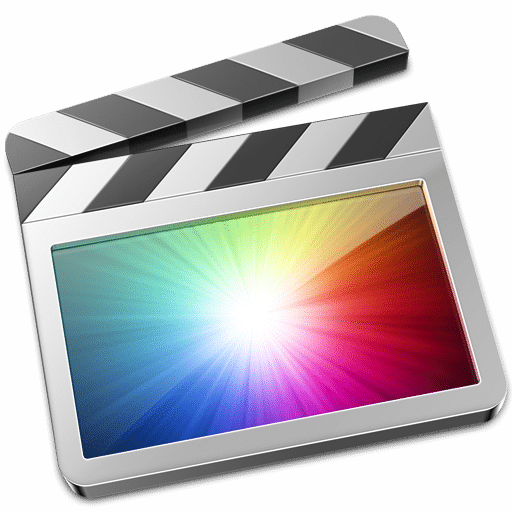 Initially, I was going to share why Final Cut Pro Classic was popular, but then I realized that it now holds little relevance, as the software has been End of Life’d for 6 years now. Let that sink in. In the past 6 years, we’ve had:
Initially, I was going to share why Final Cut Pro Classic was popular, but then I realized that it now holds little relevance, as the software has been End of Life’d for 6 years now. Let that sink in. In the past 6 years, we’ve had:
Two presidential elections…three Transformers Movies…eleven iPhone Models…and we could have gone to Mars and back three times.
Now there are, of course, some Final Cut Pro Classic holdouts, but why don’t we cut through a little bit of Apple History, and look at Final Cut Pro X.
Final Cut Pro X got out of the gates miserably.
Its predecessor, Final Cut Pro, had gained prominence in the industry, and many broadcast TV facilities in Hollywood had switched over to or, had been started as a direct result of the low cost of entry for the software. That being said, although common, Classic was still in the minority in Hollywood compared to Media Composer when Final Cut Pro X was launched. Estimates vary, but to say 15-20% of TV post was cut on Classic would not be a stretch.
X lacked many features of Classic, and many of its features went against the editing methodology that most professional film and TV editors were accustomed to. It also meant many of the workflows, hardware, and technology that made them efficient were now in question.
Apple’s launch of Final Cut Pro X also meant Final Cut Pro Classic was killed, and that caused many facilities to instantly see their investment in infrastructure have a finite shelf life. Facilities now had 2 choices: throw caution into the wind, and gamble on brand new software which lacked the things they knew, or, move to another platform, which could be expensive in terms of hardware, software, and tech infrastructure, as well as re-training the talent they had on staff.
This, uhhh, was slightly upsetting for the industry…and thus the awesome power that Final Cut Pro X had (and still has) was eclipsed by the product launch. This stalled the adoption considerably.
By 2017, the price point for powerful, standalone NLE systems – both hardware and software – were around the same price; give or take. This was not the case 10-15 years prior, when Media Composer was tens of thousands of dollars more expensive – and one of the main reasons users flocked to Final Cut Pro Classic in the first place. Now, the cost is not as much of an issue.
It’s only been recently that Hollywood has dipped its toe in the Final Cut Pro X water. Only a few feature films, including Focus and Whiskey Tango Foxtrot, have been cut on it.
In stark contrast to Avid, Apple seems to enjoy adoption success into markets outside of Hollywood. And from a purely financial perspective, this makes sense. There are many more editors and hobbyists outside the Hollywood market than professional editors in it.
Thus, Final Cut Pro X, in Hollywood broadcast television and feature film projects is in the extreme minority, with little upwards momentum in the industry.
3. Adobe Premiere Pro
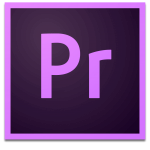 Adobe Premiere has been around almost as long as Avid Media Composer, but it wasn’t until a rewrite around 2003, that Adobe renamed it “Premiere Pro”, and Adobe simultaneously expanded their reach from the consumer market to a more professional one. And when I say “professional”, I mean professional markets outside of Hollywood. It wasn’t until the next decade that Premiere Pro finally made inroads into the Hollywood market. And what was that event?
Adobe Premiere has been around almost as long as Avid Media Composer, but it wasn’t until a rewrite around 2003, that Adobe renamed it “Premiere Pro”, and Adobe simultaneously expanded their reach from the consumer market to a more professional one. And when I say “professional”, I mean professional markets outside of Hollywood. It wasn’t until the next decade that Premiere Pro finally made inroads into the Hollywood market. And what was that event?
It’s what I call the “Final Cut Pro Fog”.
Apple killed Final Cut Pro Classic.
…and it left those facilities and users entrenched in it lost and wondering what to do and where to go. Do they go back to Avid? Or, do they look at what is the most similar to Final Cut Pro Classic, in terms of editing paradigm, hardware requirements, and talent pool?
Enter Premiere Pro.
Adobe pushed hard during the early days of Final Cut Pro X to grab the user base that felt abandoned by Apple. But it wasn’t all smoke and mirrors. Adobe added more and more features to the product to further convey to the market that they were innovating. It also helped that After Effects and Photoshop were already a staple in the Post community, and thus most facilities already owned – or should I say rented – Premiere Pro software. The rental model Adobe adopted also gave Adobe a way to push updates more often, without waiting for the quarter’s end or tradeshows like NAB. This kept Adobe relevant and industry newsworthy.
Lastly, Premiere Pro could run on the same systems that ran Final Cut Pro Classic, or even Media Composer.
This brings us up to the present day, where Adobe continues to add features like Team Projects and shared projects to make collaboration seamless for those who have worked in Avid environments.
Despite all of this momentum and development on the part of Adobe, adoption for feature film and broadcast television has been slow. Only a few TV shows – mostly cable- and a handful of feature films have been cut on Premiere Pro. Premiere has still has not reached a Hollywood adoption rate of Final Cut Pro Classic, so we’re looking at somewhere around 10% – but the gap is closing. By stark contrast, alternative professional markets, and a massive chunk of indie films have moved to Premiere Pro.
Premiere, while not nearly as relevant in feature film and broadcast television as Media Composer, is the 2nd most utilized NLE in Hollywood, and you’d be wise to learn it as it becomes more widely adopted.
4. Everything Else (Lightworks, Edius, Pinnacle Studio, Hitfilm, Blackmagic Resolve)
There are many other alternatives that can edit a piece of video just fine. I’ll address them here briefly, but to expect to get a job by concentrating on these is pretty foolish.
First is Lightworks, which has been around as long as Avid. In that time it’s cut several huge films, including “Pulp Fiction”, “Moulin Rouge”, “28 Days Layer”, “The Kings Speech” and the more recent “Wolf of Wall Street”. It’s got a free version and a paid version. While fantastic for the price point, it’s still not making many new waves in the Hollywood market, and I’m not aware of any current broadcast TV shows utilizing it.

Edius, which had a decent footprint in the broadcast and TV news industry, has drastically lost market share over the past decade or so, mainly due to lackluster marketing, and the proliferation of other tools – like Avid Media Composer – that are geared specifically towards that sector of the industry. As you can guess, it has virtually zero presence in Hollywood.

Sony recently sold their consumer based Vegas software, so now the trajectory of the software is in flux, in addition to not being used for much in the professional Hollywood realm.
Other apps, which are more consumer in nature, include Pinnacle Studio, and Hitfilm Express. Both are great for your kid’s tee-ball game, but won’t get you a job in Hollywood.
 The one unique tool that I get asked often about is DaVinci Resolve, now owned by Blackmagic. Resolve has made massive strides in the TV and film industry thanks to a tremendously powerful and very inexpensive grading tool. The price point of free or $1000, now down to $300, is downright astonishing. Plus, unlike other professional NLE companies, there is not a “rental” fee.
The one unique tool that I get asked often about is DaVinci Resolve, now owned by Blackmagic. Resolve has made massive strides in the TV and film industry thanks to a tremendously powerful and very inexpensive grading tool. The price point of free or $1000, now down to $300, is downright astonishing. Plus, unlike other professional NLE companies, there is not a “rental” fee.
Recently, Blackmagic incorporated traditional creative editorial tools into Resolve, as well as a powerful audio engine via the acquisition of Fairlight. The latest version also has the ability for shared projects, considered by many to be the killer feature for professional film and TV post production.
However, as of now, the editorial side is so new, that many folks are holding their breath to see what happens elsewhere…and will the superior grading of Resolve be enough to force editorial’s hand to switch over…or, will Resolve remain a grading tool, and only be used for editorial on smaller independent projects. When you start with nothing, it’s easy to make great strides, so it will be interesting to see how Blackmagic can innovate once the Resolve editorial features reach parity with the industry leaders.
5. The Future
Ahh yes, the question I get asked the most.
![]() First, Let’s look at Avid. A company in flux, who has had financial reporting problems, has a stock price a tenth of what it was back in 2005, and has had significant layoffs.
First, Let’s look at Avid. A company in flux, who has had financial reporting problems, has a stock price a tenth of what it was back in 2005, and has had significant layoffs.
As for Media Composer, Avid needs to walk the line between overhauls and refreshes without alienating their current user base, who is traditionally less accepting of change, given that their livelihood depends on it. This stalls newer, younger users who can’t identify with the user interface or operation.
Yes, they dominate the film and TV space in Hollywood, but is that niche of the industry as a whole enough to sustain the company?
Even if Avid as a company went away, it would make zero sense for the new owner to kill Media Composer, and with how risk-averse Hollywood is, there would be Media Composer systems running for many years to come. If your goal is to get a job in Hollywood in the next few years, there is zero reason to not get your Avid chops in order.
 As for Apple, they seem to be content for Final Cut Pro X to be used everywhere else but Hollywood. Ease of access via the App store, a relatively low price point, and some really badass editing tools for the novice editor make it a great tool in your editing toolkit. Do I see it ascending to the level that Final Cut Pro Classic had in Hollywood? No. The industry landscape is different from the early 00’s – the cost of entry across the board has become commodity priced.
As for Apple, they seem to be content for Final Cut Pro X to be used everywhere else but Hollywood. Ease of access via the App store, a relatively low price point, and some really badass editing tools for the novice editor make it a great tool in your editing toolkit. Do I see it ascending to the level that Final Cut Pro Classic had in Hollywood? No. The industry landscape is different from the early 00’s – the cost of entry across the board has become commodity priced.
It wouldn’t hurt to learn it, but it won’t get you much work in feature film or broadcast television. Aside from bragging rights, I don’t think Apple minds this – there is much more money to be had outside of Hollywood than in it…and they’re already making money by selling most of Hollywood overpriced computers, anyway.
 Adobe Premiere Pro, however, seems to be trending upward as an editorial tool more than anyone else in the industry. Updates are fast and furious, it runs on Mac or PC, and follows the common and comfortable editing paradigms the industry was founded on. Its entire suite of tools also adds added functionality that you just don’t find with other editorial solutions, and it’s already installed on most machines due to their complete suite of tools.
Adobe Premiere Pro, however, seems to be trending upward as an editorial tool more than anyone else in the industry. Updates are fast and furious, it runs on Mac or PC, and follows the common and comfortable editing paradigms the industry was founded on. Its entire suite of tools also adds added functionality that you just don’t find with other editorial solutions, and it’s already installed on most machines due to their complete suite of tools.
Now, in the process of writing this episode, I took the opportunity to consult some fine colleagues in the industry to ensure I was on the right path. As Avid, Adobe, and Apple either don’t release exact sales numbers, or don’t filter out by geography or industry, I’ve had to get a little creative.
 Quick FYI for this next part to make sense: A vast majority of broadcast TV and feature film production facilities in Hollywood get their editing gear from one of two places: Resellers, who can sell all of the gear, integrate it, and make it all work together, or, rental facilities who own the equipment, but rent it out to productions and support it.
Quick FYI for this next part to make sense: A vast majority of broadcast TV and feature film production facilities in Hollywood get their editing gear from one of two places: Resellers, who can sell all of the gear, integrate it, and make it all work together, or, rental facilities who own the equipment, but rent it out to productions and support it.
I contacted several other resellers in the Hollywood area, as well as several rental facilities, and asked them to give me some insight as to what THEY were seeing.
No surprise, across the board, Media Composer was the dominant player in broadcast television and feature film, by a wide margin, encompassing 80-90% of the market. However, once you move out of this niche market, Adobe became much more common, with Final Cut Pro X bringing up the rear. Also, out of the aforementioned Final Cut Pro Classic Fog, Adobe seems to have won the switcher award, as more folks in Hollywood moved from Final Cut Pro Classic to Adobe Premiere Pro, rather than to Media Composer or Final Cut Pro X.
This is probably the most important thing I came across: is that a vast majority of facilities that have Media Composer are not adding new seats. They plug along with what they have, and only buy updates when it’s absolutely necessary…and often they’ll sit on older versions because upgrading doesn’t give them enough new tools to warrant the change.
Now, these same facilities, while not buying many new seats of Media Composer, are adding seats of Creative Cloud at a rate must faster than that of Avid.
Lastly, and I can’t stress this enough. Hollywood is NOT the only place to work, and broadcast television or feature films are not the “end all, be all” of creative visual storytelling. Hone your storytelling skills using whatever you can get your hands on – and I mean everything – and then find what sector of the industry satisfies you creatively. And then focus your technical chops on the tools found in that area. But be open to learning more tools, because the days of basing your editing career on one software solution are long gone. The video editing realm is only widening, and learning more is the only way to remain employable
Until the next episode: learn more, do more.
Like early, share often, and don’t forget to subscribe. Thanks for watching.
Special Thanks: Resellers and Rental facilities (you know who you are).

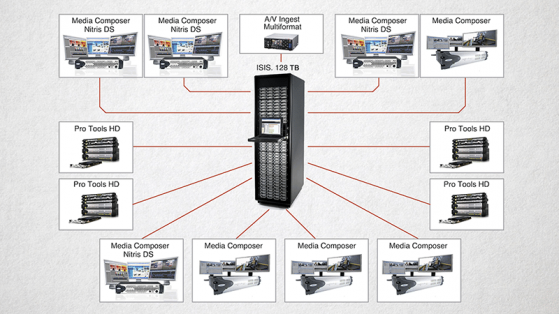



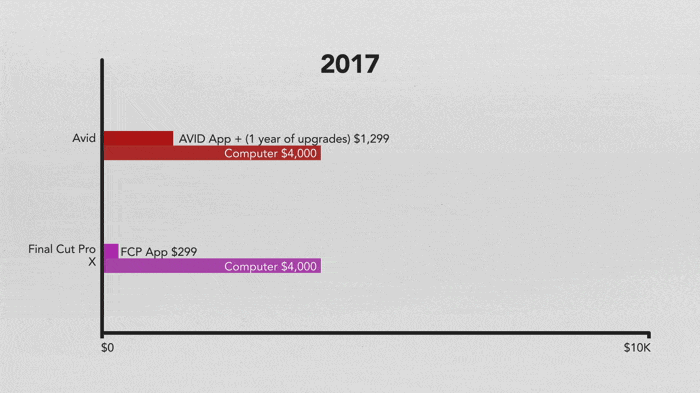
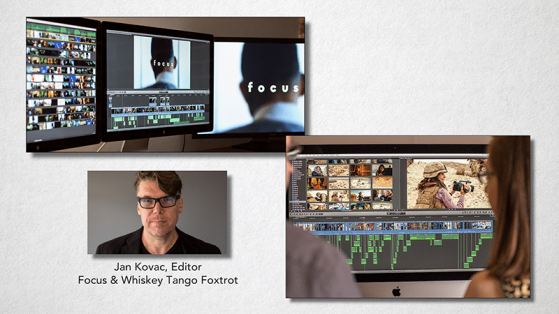
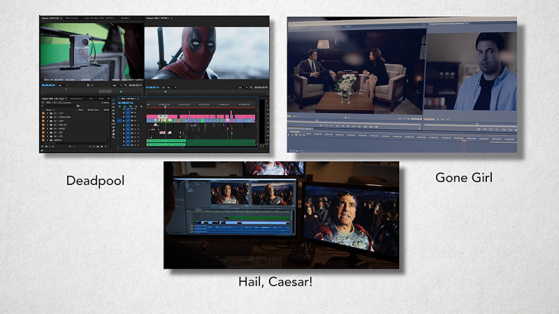

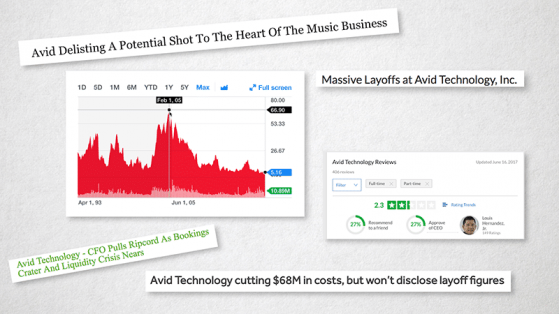

This was very interesting, but I noticed that you didn’t give any attention to Autodesk Smoke. We’ve been using for a few years and it’s EXTREMELY powerful.
Thanks for watching!
Correct, I didn’t mention it. Smoke is still more of a niche tool, despite the addition of editorial tools a few years ago. I’ve never seen a job posting looking for a “Smoke editor (or artist) for editorial”.
Yes, Smoke does some things very well, but if I included Smoke, I’d have to start including other finishing or compositing tools….and the episode would be an hour long!
Thanks for commenting!
Yeah, it guess Smoke belongs in another video altogether! Thanks for responding.
I switched from Smoke to Flame 4 yrs ago as Smoke felt like it was being EOL’d. I have been cutting for over 30yrs and have used most platforms , and only went the autodesk route at the demise of FCP7. I hated FCP X, don’t like the avid methodology and premiere just didn’t cut it for me (pun!) Whilst Flame is not necessarily the fastest purely edit environment, if you do anything that involves more creative effects and compositing, you be hard pressed to beat Flame. Its not promoted much by Autodesk (why??) and the learning curve is pretty… Read more »
I thought that was a pretty reasonable assessment, if you want to be in LA. However once you leave big network TV and into the land of cable, you’ll see a much larger mix of NLE’s – PP and X. Back in the 2000’s I was doing training / service / support in the NY market replacing MV with FCP7 systems. Perhaps the one thing I heard from almost everyone I taught was ” this is so much easier than avid”. personally I’ve done broadcast shows back in the day on M100 which you left out. They were avid’s main… Read more »
HI Steve:
The initial script and first cut of the episode had a short portion on Media 100, but I felt it kept the episode lingering on the history too much, which wasn’t really relevant for folks starting to cut (or wanting to get into the industry) today.
You’re spot on, when we move out of the realm of Hollywood, things change…which maybe I’ll address in another episode.
Thanks for watching!
you did not cover the shared storage world which Avid is a leader in…
Hi Henry:
I mentioned Avid Shared Storage, and discussed the entire ecosystem surrounding Avid, including storage, as well as shared projects, which Avid storage provides….. but you’re right, I didn’t go in depth about it. I wanted to focus on the software and not go off on a tangent that would make the episode too long.
I have, however, dedicated several episodes of 5 THINGS to shared storage, including Avid, so I highly recommend you check them out!
Thanks for watching.
Thank you for the comprehensive article and video, Michael. And glad to see someone notable actually acknowledging that professional editing also exists outside of the realm of Hollywood. Will definitely repost for my fellow editors. Thanks!
Great review Michael! We don’t work in Hollywood – focusing on corporate media. Our journey from BetaCam/Toaster/AmiLink to Media100XR to Final Cut Pro (classic) and final transition to Adobe PP during the “fog” has been an interesting ride. We dabbled with Resolve but I agree – the feature set just isn’t there yet – but we’re keeping an eye on it.
Michael:
Great episode. Was a die hard FCP 7 user, made the switch to Adobe PP CC, which in my opinion was what FCP should have evolved into rather than a paradigm shift with FCP X. HOWEVER, I do believe that DaVinci Resolve, if they keep their hands on the wheel, may be the new FCP 7. So for now, it’s PP CC and Resolve.
Lou Hemsey / Lou Hemsey Music and Film
Great article and video discussion. Im currently in a college Digital video course and the software we use there is Avid media composer. As someone whose background is a music producer hobbyist, I was well aware of Pro Tools in the professional market, but due to cost and owning a Mac for many years now, I became acquainted with Logic. And as such iMovie and Final cut for limited times I needed to put together video. Now that Im venturing more into video with goPros, DSLRs and soon Drones Ive been researching professional video software. My biggest issue at school… Read more »
I got pulled Ito Premier when FCP was leap frogged by it, I keep trying resolve but I find their timeline is slow and cumbersome. I think as an independent filmmaker I’d find the temptation to do little grades too much too. Though for me there is no one even close to resolve for finishing.
I am an Avid for over two decades now. And I still like it a lot. Sure there are things I am missing, but in the end, it gets the job done quickly. I’ve been using Premiere before on a few TV shows. Usually, you get used to new software after a while and see what’s good and what’s bad. With Premiere, every day got worse. Four years later I am editing on Premiere again. Unfortunately, Premiere has not improved for me. I can’t imagine any professional editor using this software on purpose when there is Avid around. One should… Read more »
Thanks for blog 🙂